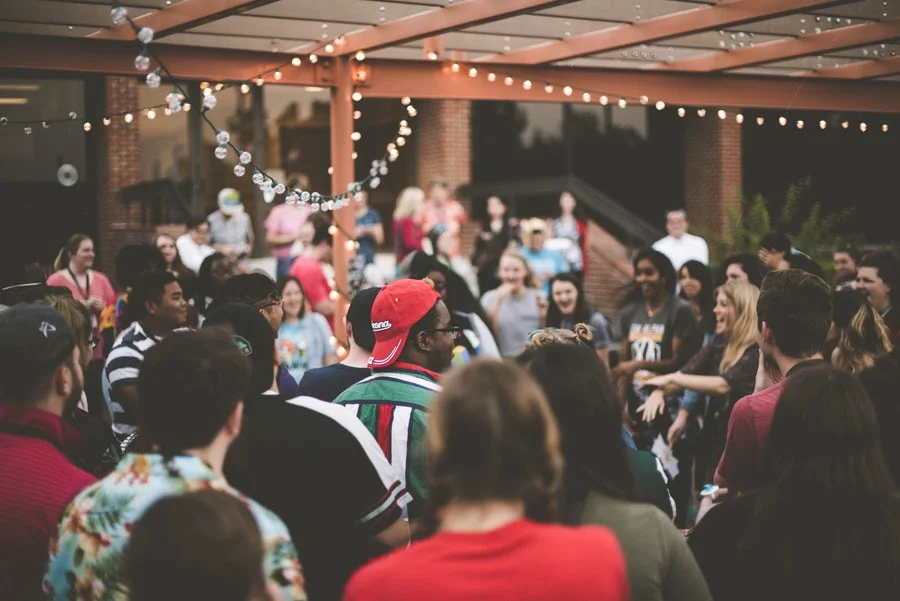Sinners
Sinners
If you haven’t seen Sinners yet, it’s time to fire up your favorite digital platform and press play.
Ryan Coogler’s latest is an event: a genre-shattering Southern Gothic vampire musical set in 1932 Mississippi. It is as fascinating and as glorious as that sounds. It follows twin brothers Smoke & Stack (both acted with hypnotic vitality by Michael B. Jordan) who return home to open a juke joint, only to find themselves tangling with supernatural forces that don’t give a fig for their entrepreneurial dreams or their heritage.
It is a masterpiece. A great roaring triumph of a film, packed to the burning rafters with ideas, action, and images so stunning they practically sear the screen. It demands to be seen in a theater, preferably one with a screen big enough to catch every drop of its beautiful spectacle, and a sound system ready to rattle the fillings from your teeth.
The opening narration speaks of the lore of musicians summoning ancestors with their songs — a bit of poetic sorcery that every honest listener has felt at least once. That power, in this story, belongs to Sammie, a young Black bluesman, and is coveted by Remmick, a banjo-plucking Irish vampire of extraordinary menace.
The whole film thrums with the sorrowful, enraged knowledge of Black creation and white theft. Watching it, I couldn't help but reflect on my own history in the white charismatic worship movement — a history steeped in a spiritual music we had taken without ever paying the full price. Sinners lays it bare: We were the vampires.
Imagine a worship service. The lights are dim, except for a solitary blue spotlight cutting dramatically across the smoke-machine haze. A bearded young man, wearing tight jeans and the facial expression of a troubled minor prophet, kicks a reverb-heavy G chord. An attractive woman with perfectly tousled hair lifts her hands heavenward. You can feel God in the room.
The year is not 1972, 1985, or 1997, although it could be. It’s just "Now," an eternal Now of white charismatic worship. The setting could be a Vineyard Church, Bethel Church, a Passion conference. The music is "intimate." It is "relevant" It is "Spirit-led." It is also, if you listen even a little closely, the musical equivalent of someone stealing your coat and selling it back to you at twice the price.
Let’s be very clear up front: White charismatic worship — by which I mean the vast, tangled, contradictory phenomena of emotionally performative, musically semi-competent, "come as you are" evangelical rock — owes its very soul to the Black church. And not in a "we were inspired by" kind of way. In a "this vampire will devour the power of the blues" kind of way.
This is America, and because theft and myth-making are basically national pastimes, this shouldn't surprise us. What should surprise us, maybe, is how seamlessly the theft has been repackaged as innovation. Vineyard worship — the soft-focus, pseudo-sultry, chord-progression-driven vibe that exploded out of California in the late 70s — is usually credited with inventing "modern worship music."The long, uninterrupted worship music set designed to be a spiritual journey in and of itself.
“Speaking in Tongues” was a practice kept alive by African Christian spirituality and was looked upon by white western eyes as primitive, uncouth and irreverent. Until the the Vineyard “discovered” the lost gift.
But Vineyard didn't discover this. They domesticated it. They laundered it into something palatable to suburban audiences uncomfortable with the sweaty, visceral, embodied spirituality of the Black church. Black gospel music — from Thomas Dorsey to James Cleveland to Aretha Franklin (who spent her life trying to exist above the secular/sacred divide) — has long understood that music is not an accessory to worship. It is worship. A feedback loop between congregation and Spirit. Improvisational, communal, sensory. An experience.
The Jesus People — the acid-dropping, end-times-obsessed white kids in the late 60s and early 70s who discovered Jesus was actually cooler than drugs — wanted the feeling of Black church music without the history, without the struggle, without the necessary suffering that made that music mean something. And so they lifted the call-and-response. They lifted the emotive vocal runs. They lifted the "move of the Spirit" ethos. But they sanitized the urgency and erased the context. And unforgivably, they left behind the cause of Black liberation.
Meanwhile, across the Pacific, Hillsong was busy perfecting a similar theft. Take the raw, volcanic energy of Black gospel choirs, bleach it with arena-rock aesthetics, AutoTune the potency right out of it, and repackaged it for white millennials who really like Coldplay but feel guilty about it.
Fast-forward to Bethel Music, and you see the theft has reached its final, most absurd stage.
Bethel has managed to market Black musical pathos — desperate hope, wailing lament, the ecstatic shout — as a kind of therapeutic spa experience for mostly white suburbanites who are stressed out by their jobs at software startups. Bethel worship nights are less like church and more like emotional ayahuasca ceremonies, minus the self-awareness and ego death.
The entire edifice of white charismatic worship — the stadium tours, the Spotify playlists, the 24/7 YouTube live streams with titles like "Worship Soaking Session for Spiritual Warfare" — rests on a foundational lie: that they invented a form of "intimacy with God" that is somehow better, purer, more authentic than traditional liturgical worship while being "safer" than traditional gospel worship and Black pentecostalism.
But what they actually invented was a kind of aesthetic colonialism. They colonized Black sound, Black performance styles, Black spiritual longing, and repackaged it as a white "revival." And here’s the kicker: They turned around and marketed it back to Black churches under the auspices of "unity".
The ultimate irony: many Black gospel artists now sometimes feel pressured to conform to new white worship music norms if they want broader (read: whiter) audiences. We are watching the ouroboros eat its own tail.
And it’s not just music. It’s the theory of experience itself. The notion that God is most present in heightened emotional states. That revival is an emotional crescendo. These are ideas and practices that have Black Pentecostalism written all over them. But when filtered through white charismatics, it becomes abstracted into vague concepts like "glory encounters" and "prophetic atmospheres" that allow worshippers to feel radical or passionate without ever being liberational.
Black worship has always been political because Black life in America has always been political. Singing "God will make a way" in a storefront church in 1955 Birmingham is not the same as singing it in an air-conditioned megachurch in Orange County while planning your next missions trip to a developing country you can't even locate on a map.
White charismatic worship took the sound, the feel, the emotional currency of Black church — and systematically stripped away its teeth, its urgency, its historical memory. What remains is something slick and marketable and, ultimately, hollow.
(You are about to read the "to be fair" paragraph — the attempt at balance that sounds suspiciously defensive). To be fair, not every white charismatic worship leader is a conscious thief. Most are earnest. Most sincerely believe they are stewarding "moves of God." But that doesn’t make the theft any less real.
This isn't just about music history. It's about memory. About what gets remembered and what gets erased. About who gets to be seen as "innovators" and who gets quietly disappeared into footnotes. About how American Christianity has an almost pathological allergy to acknowledging its own debts; musical, theological, cultural, or otherwise.
We are the vampires. But like the vampires in the movie, the only way to free the soul, is to die. To surrender control of the forms of worship which have never belonged to us. And if you know your Bible at all, that is precisely, the way of Jesus Christ.
For more content from David Gate, please subscribe to his Substack: A Rebellion Of Care.















